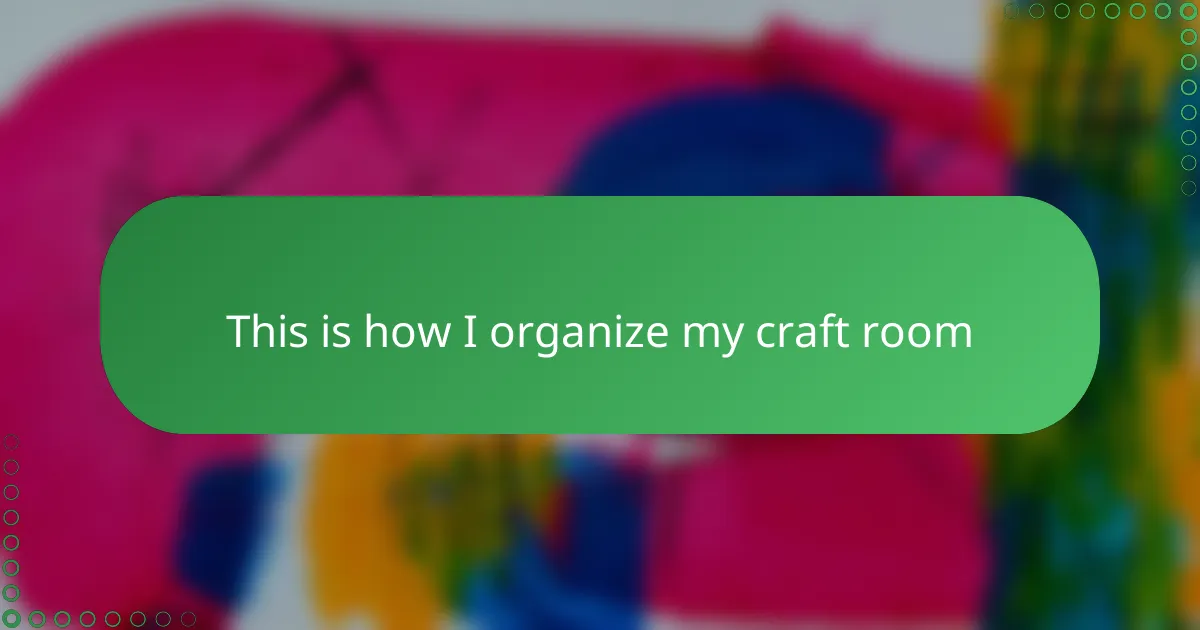Key takeaways
- Understanding the unique qualities of handmade paper enhances the creative process and appreciation for craftsmanship.
- Essential tools, like sharp scissors and quality adhesives, are crucial for precision and achieving desired project outcomes.
- Organizing craft materials with clear containers and labels fosters creativity and prevents frustration during crafting.
- Personalizing your craft space with colors and decorations can motivate and inspire while maintaining an orderly environment boosts focus and creativity.
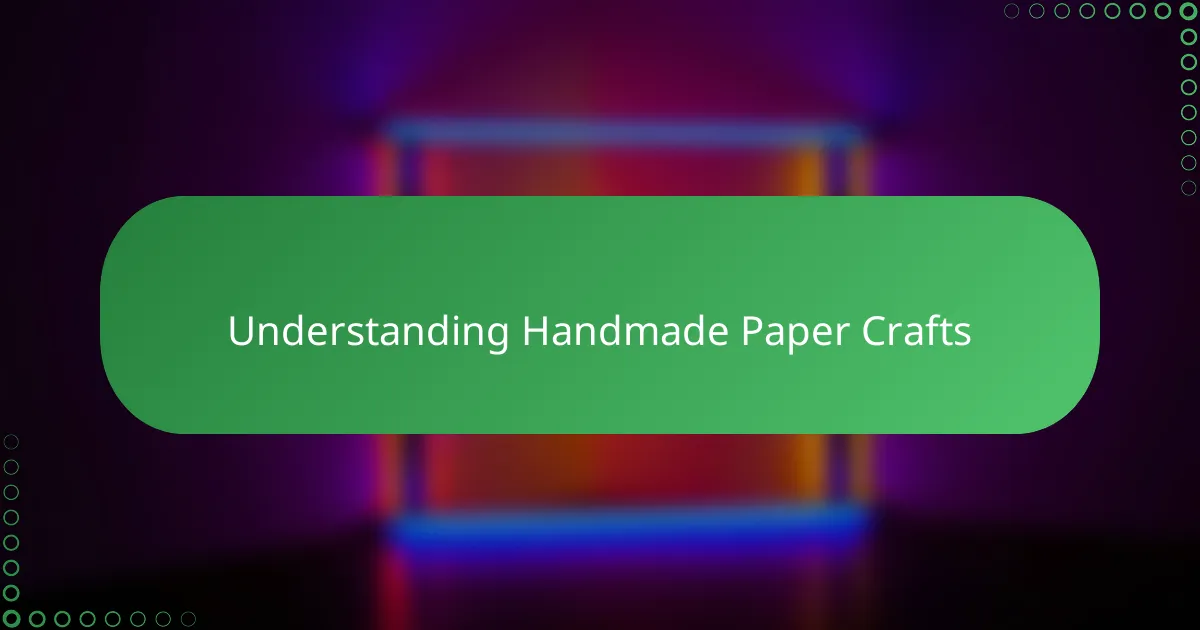
Understanding handmade paper crafts
Handmade paper crafts feel like a breath of fresh air amidst the fast-paced world we live in. Have you ever held a piece of paper you crafted yourself, noticing its unique texture and imperfections? For me, that moment sparks a special connection – it’s like the paper carries a bit of my soul.
I’ve found that understanding the paper’s qualities deeply influences the creative process. Different fibers, weights, and finishes can transform a simple sheet into a work of art or a heartfelt message. Isn’t it fascinating how something so ordinary can become extraordinary with the right touch?
When I dive into paper crafting, I’m constantly learning about the history and techniques behind handmade papers. Knowing that centuries of artisans have perfected these methods adds a layer of appreciation I can’t ignore. It makes me wonder: what stories will my own creations tell someday?
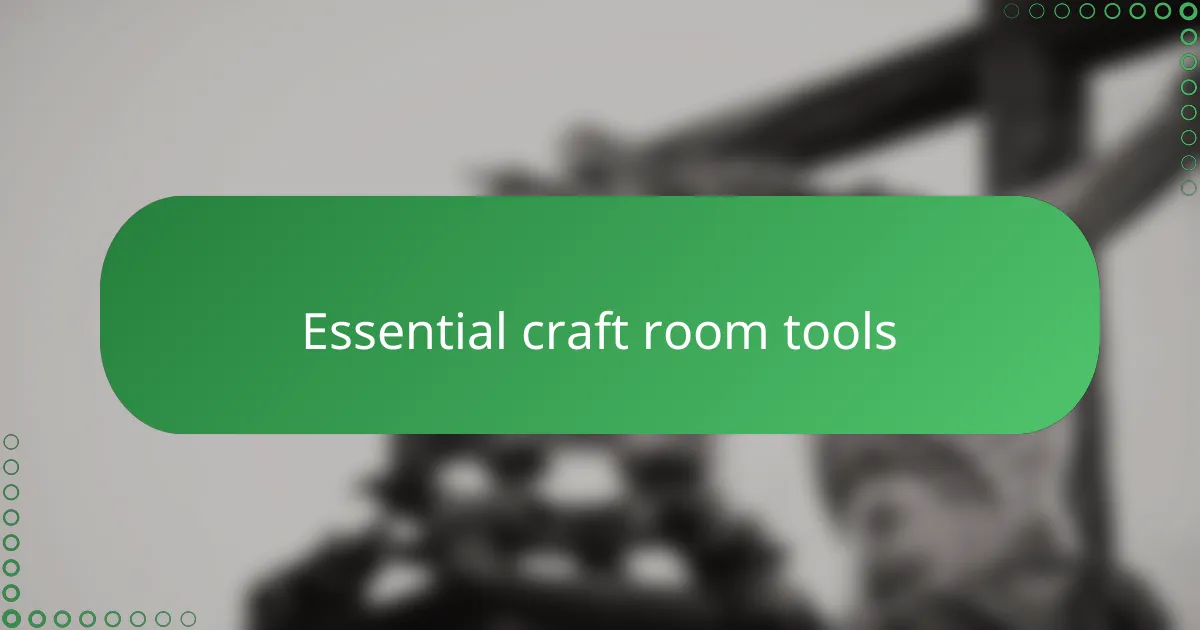
Essential craft room tools
Every craft room needs a trusty pair of scissors, but I’ve learned that not just any scissors will do. Precision is everything when working with delicate handmade paper, so I always keep a sharp, fine-tipped pair close by. Have you ever tried cutting intricate shapes with dull scissors? It’s frustrating, and those tiny tears in the paper can ruin hours of effort.
Alongside scissors, my craft room is never without a quality cutting mat and a craft knife. These tools give me control and confidence, especially when I’m layering papers or adding tiny details. I remember the time I tried to cut without a mat—I ended up scoring my tabletop and, more importantly, my patience!
Finally, I can’t overstate the value of a good adhesive. From glue sticks to liquid adhesives, choosing the right one can make or break the project’s finish. I often experiment with different types depending on the paper’s texture—have you noticed how some glues leave nasty wrinkles or shine? Finding the perfect match feels like discovering a secret ingredient for success.
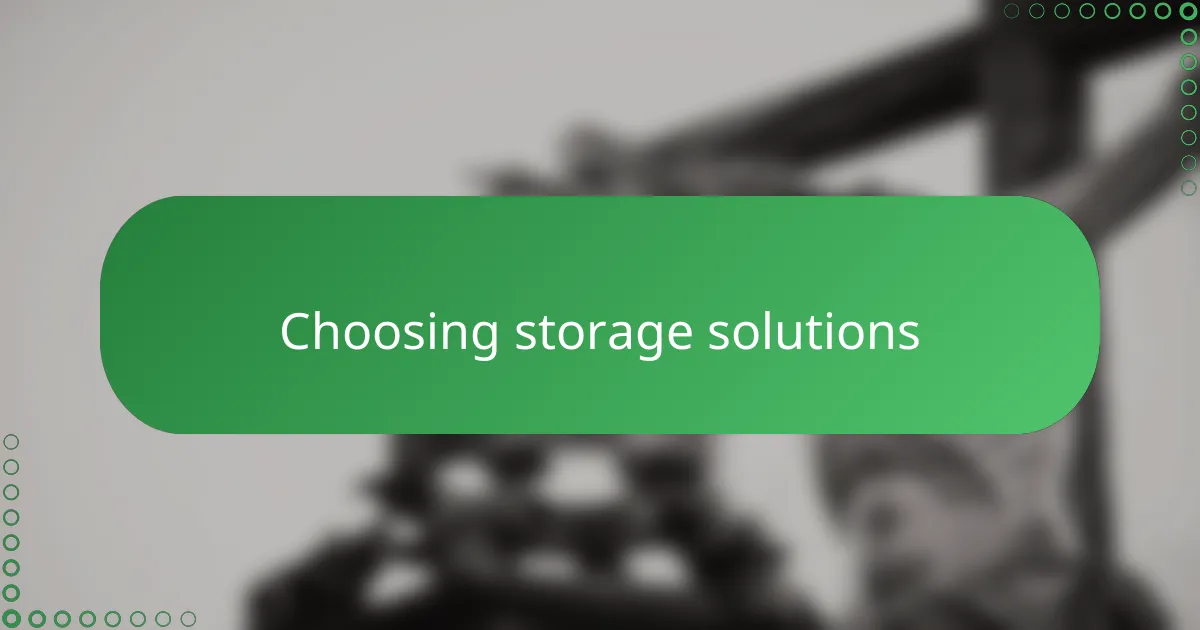
Choosing storage solutions
When it comes to choosing storage solutions, I’ve learned that flexibility is key. Handmade paper comes in so many sizes and textures that rigid, uniform storage just doesn’t cut it for me. Have you ever tried fitting a delicate, oversized sheet into a small drawer only to find it crumpled and unusable? That’s why I prefer adjustable shelves and clear containers—so I can see my supplies at a glance without risking damage.
I also keep rolling racks and flat files in my craft room because they protect larger sheets from bending or wrinkling. It took me a while to realize how much my mood improved just by having my papers neatly stored and easily accessible. Isn’t it amazing how a well-organized space can inspire creativity rather than stifle it?
Lastly, I’m a big fan of using labeled bins and drawer units for smaller tools and embellishments. It might sound simple, but knowing exactly where my glue sticks or punches are saves me from that frantic, last-minute search. Have you noticed how a tidy space somehow makes projects flow smoother and frustration melt away? That’s the magic I try to capture every time I organize.
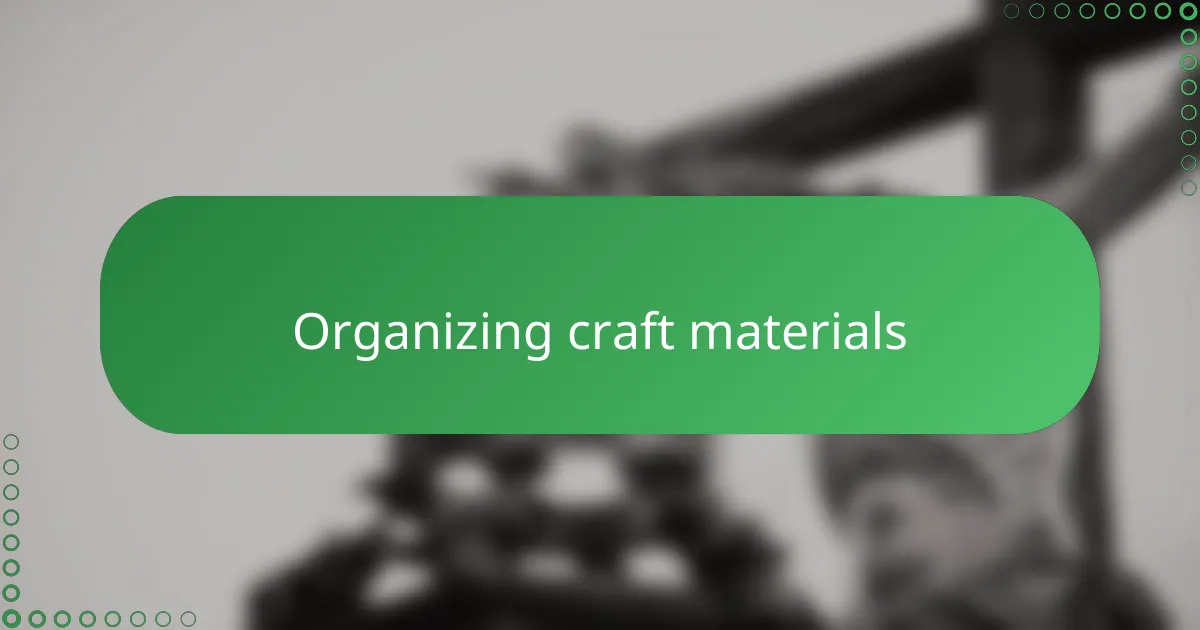
Organizing craft materials
When I organize my craft materials, I start by grouping like items together—papers with papers, tools with tools, embellishments with embellishments. This simple step saves me from scrambling through piles when inspiration strikes, and it also gives me a satisfying sense of order. Have you ever felt that little thrill when you open a drawer and everything is exactly where you want it? That’s my favorite feeling in the craft room.
I’ve also found that clear containers are game-changers for keeping tiny items like beads, stamps, or washi tapes visible and accessible. It’s frustrating when you forget about a favorite supply buried deep inside a box, isn’t it? With transparent storage, I’m reminded of all the possibilities at a glance, which sparks new ideas before I even pick up my tools.
One thing I rarely skip is labeling each drawer or bin, no matter how obvious the contents seem. Over time, I realized that clear labels prevent those “Where did I put that?” moments that can kill creative momentum. Maybe it’s the small things, like a label, that keep my creativity flowing smoothly—don’t you agree?
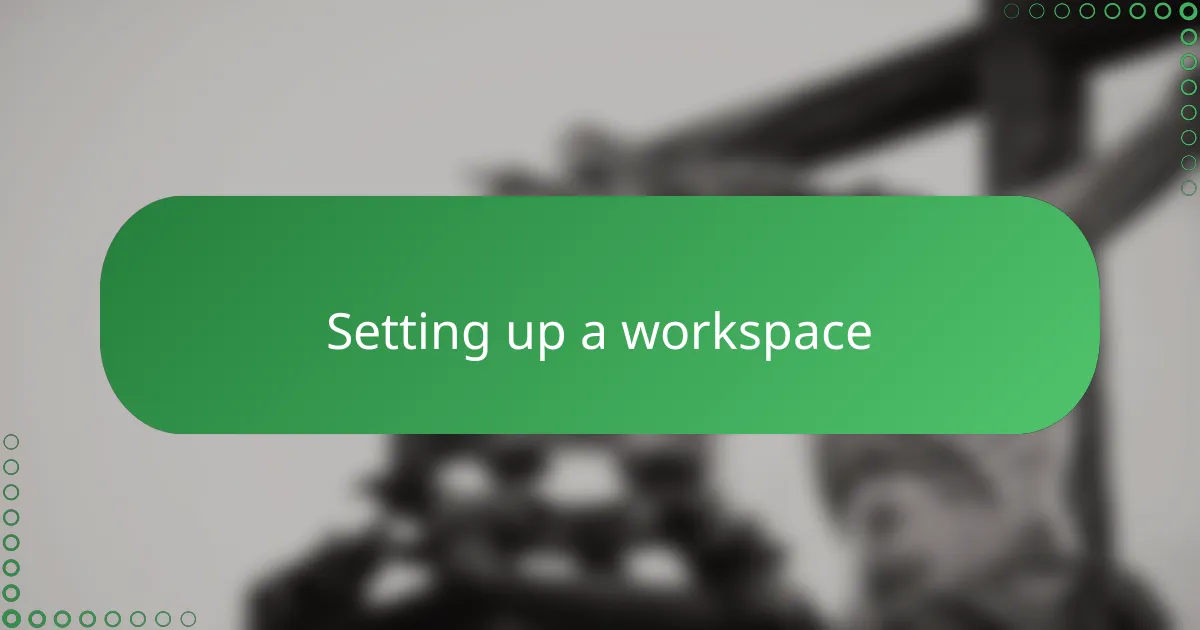
Setting up a workspace
Setting up my workspace always begins with finding the perfect spot that feels inviting rather than cramped. Have you ever tried crafting in a corner so tight you’re constantly bumping into things? For me, having enough room to spread out my papers and tools makes all the difference — it’s where creativity starts to flow freely.
I also pay close attention to lighting because working with delicate handmade paper demands precision. Natural light is my favorite, but when that’s limited, a bright, adjustable desk lamp steps in. It’s amazing how proper lighting not only reduces eye strain but also reveals every subtle texture and color variation, making the craft experience so much richer.
Finally, I make sure that everything I need is within arm’s reach but not cluttering the surface. It’s a balancing act—too much stuff can feel overwhelming, yet having my favorite tools nearby keeps the creative momentum going. Do you find yourself pausing just to search for a glue stick or scissors? I certainly do, and having a dedicated spot for each essential item saves me from those frustrating interruptions every time.
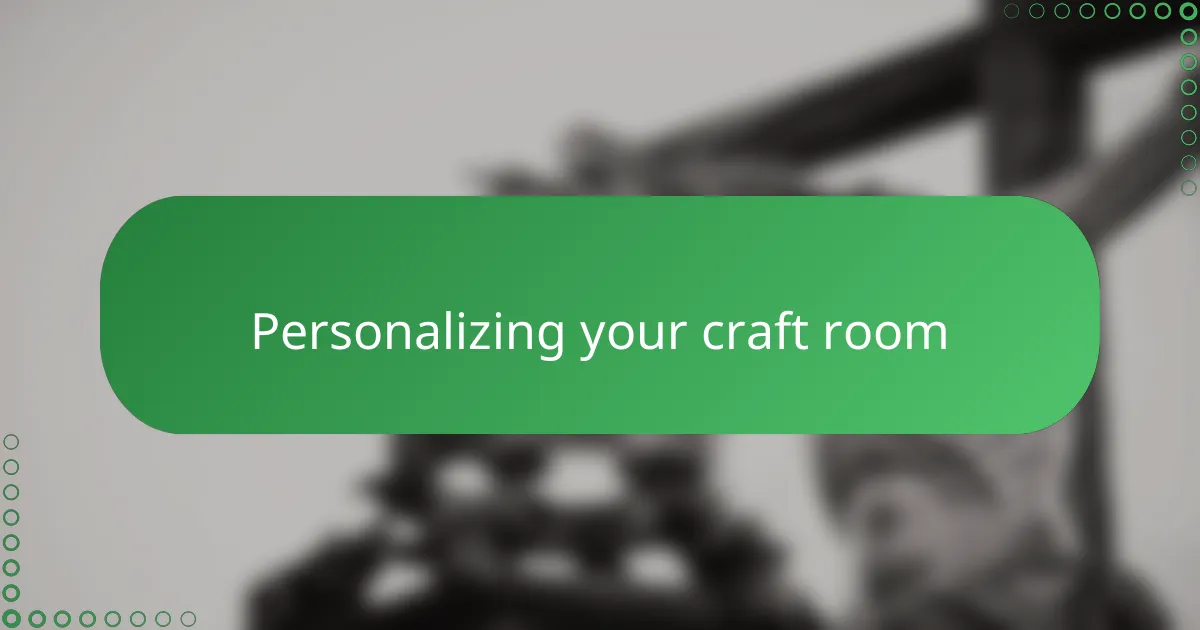
Personalizing your craft room
Personalizing your craft room is more than just decorating—it’s about creating a space that truly feels like your creative sanctuary. I remember the first time I added a few handmade art pieces and colorful cushions; suddenly, the room didn’t just look inviting, it felt inspiring. Have you ever noticed how surrounding yourself with things you love can spark fresh ideas?
Choosing colors and decorations that reflect your personality can dramatically influence your mood while crafting. For me, soft pastels and natural textures create a calming vibe that helps me focus on delicate paper work. What colors or elements would make you feel motivated and relaxed at the same time?
I also like to display my finished projects or ongoing works around the room. It’s a constant reminder of what I’m capable of and keeps me connected to my artistic journey. Does seeing your own creations in your space make you feel proud or push you to try new techniques? For me, it does both—and that’s the magic of personalizing a craft room.
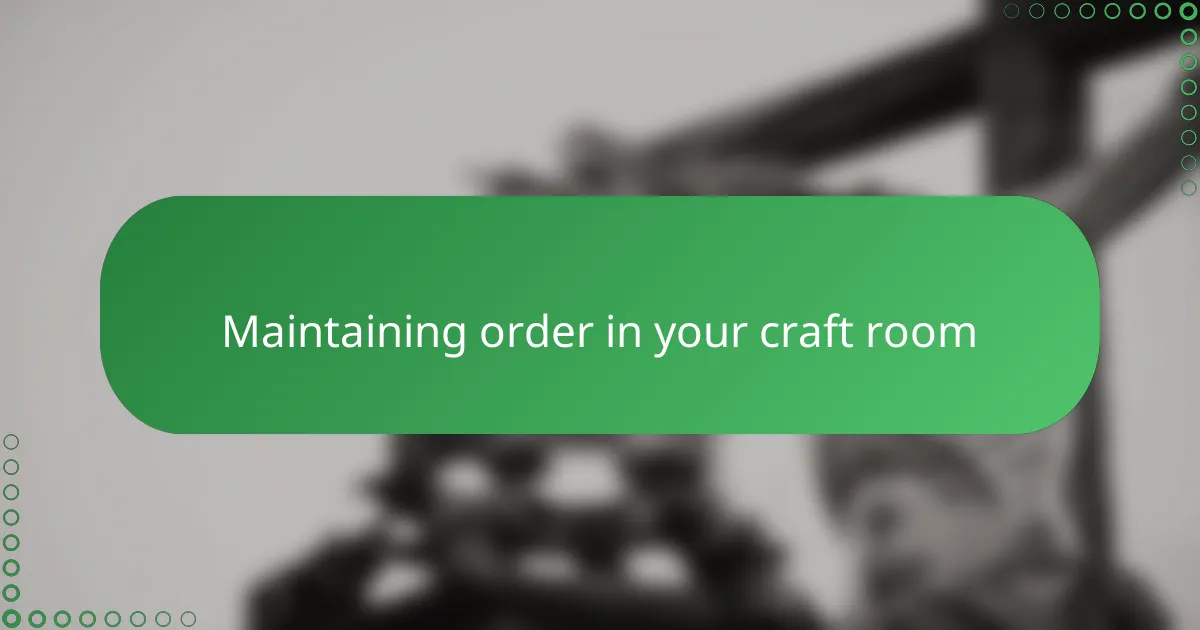
Maintaining order in your craft room
Keeping my craft room orderly is a daily little ritual that helps me stay focused. I’ve learned that tidying up right after a project not only clears the space but also clears my mind. Have you ever noticed how a messy workspace can make even the simplest cut or fold feel overwhelming? For me, maintaining order means preventing that creative block before it starts.
I also rely on a few habits that keep chaos at bay. For instance, I always return tools and materials to their designated spots as soon as I’m done using them. It sounds simple, but that routine has saved me countless minutes hunting for a misplaced glue stick or brush. Doesn’t it feel better to walk into a room that’s ready for your next burst of inspiration?
Sometimes, despite my best efforts, clutter creeps back in—especially when I’m deep into a new idea. When that happens, I take a short break to reset the space with a quick scan and tidy. Oddly enough, that pause not only restores order but often sparks fresh ideas I wouldn’t have had otherwise. Have you tried stepping back from a mess only to find clarity waiting for you? That’s my secret weapon for keeping my craft room—and my creativity—in balance.
